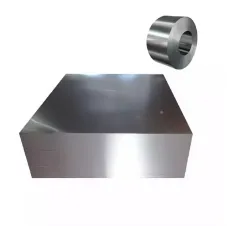
Dec . 02, 2024 10:31 Back to list
The role of tin pie plates in multiple parts of automobiles
In the modern automobile manufacturing process, tin pie plates play an increasingly important role as an important material. Tinplate is made of steel or aluminum alloy as the substrate, and a layer of lead tin alloy coating is formed on its surface through electroplating or hot-dip coating processes. This special surface treatment not only enhances the aesthetics of the board, but also significantly improves its corrosion resistance, making it widely used in multiple parts of automobiles.

Tin pie plates have significant advantages in anti-corrosion of automotive bodies
With the diversity of automotive usage environments, external factors such as rain, moisture, and chemical erosion make the metal parts of the car body highly susceptible to rusting. The tin plate, due to the protective effect of its surface tin layer, effectively slows down oxidation reactions and extends the service life of the vehicle body. This is of great significance for ensuring that cars maintain good appearance and performance in the long term.
The application of tin pie plates in automotive interiors cannot be ignored
Many car interior components such as instrument panels, door panels, and center console use thin tin plates as the base material. These interior components not only need to have excellent mechanical performance and stable shape, but also meet the visual and tactile requirements. The surface treatment process of tinplate can create a textured and glossy effect, making the car interior more aesthetically pleasing and enhancing the consumer experience.
Tin pie plates also play an important role in automotive electrical connection components
In modern cars, the power system plays a crucial role, and the stability and durability of electrical connections directly affect the overall performance of the car. Tin plates have superior electrical conductivity and low contact resistance, making them excellent electrical connection materials. They are widely used in battery terminals, relay connectors, and motor contacts of automobiles, ensuring efficient and safe power transmission.
Tin pie plates also have excellent processing properties
In the process of automobile manufacturing, many components need to go through processing steps such as stamping, cutting, and welding. Tin steel plates, due to their excellent plasticity and toughness, can adapt well to various processing needs, reduce material waste, and improve production efficiency.
In summary, the role of tinplate in automobile manufacturing cannot be underestimated. With its excellent anti-corrosion ability, outstanding surface treatment effect, excellent electrical conductivity, and good processability, tinplate not only improves the quality and service life of automobiles, but also enhances consumers' driving experience. With the continuous advancement of technology, the application scope of tinplate is expected to further expand, injecting new impetus into the development of the automotive industry.
-
The Ultimate Guide to Galvanized Steel Roofing and Coils
NewsMay.08,2025
-
The Power of Electronic Tinplate Sheets and Coils
NewsMay.08,2025
-
The Future of Coffee: The Power of Coffee Tin Can Packaging
NewsMay.08,2025
-
The Benefits of PPGI Steel Coils and Sheets for Roofing and More
NewsMay.08,2025
-
Hot Dipped Galvanized Steel Sheets and More
NewsMay.08,2025
-
Essential Materials for Home Improvement
NewsMay.08,2025